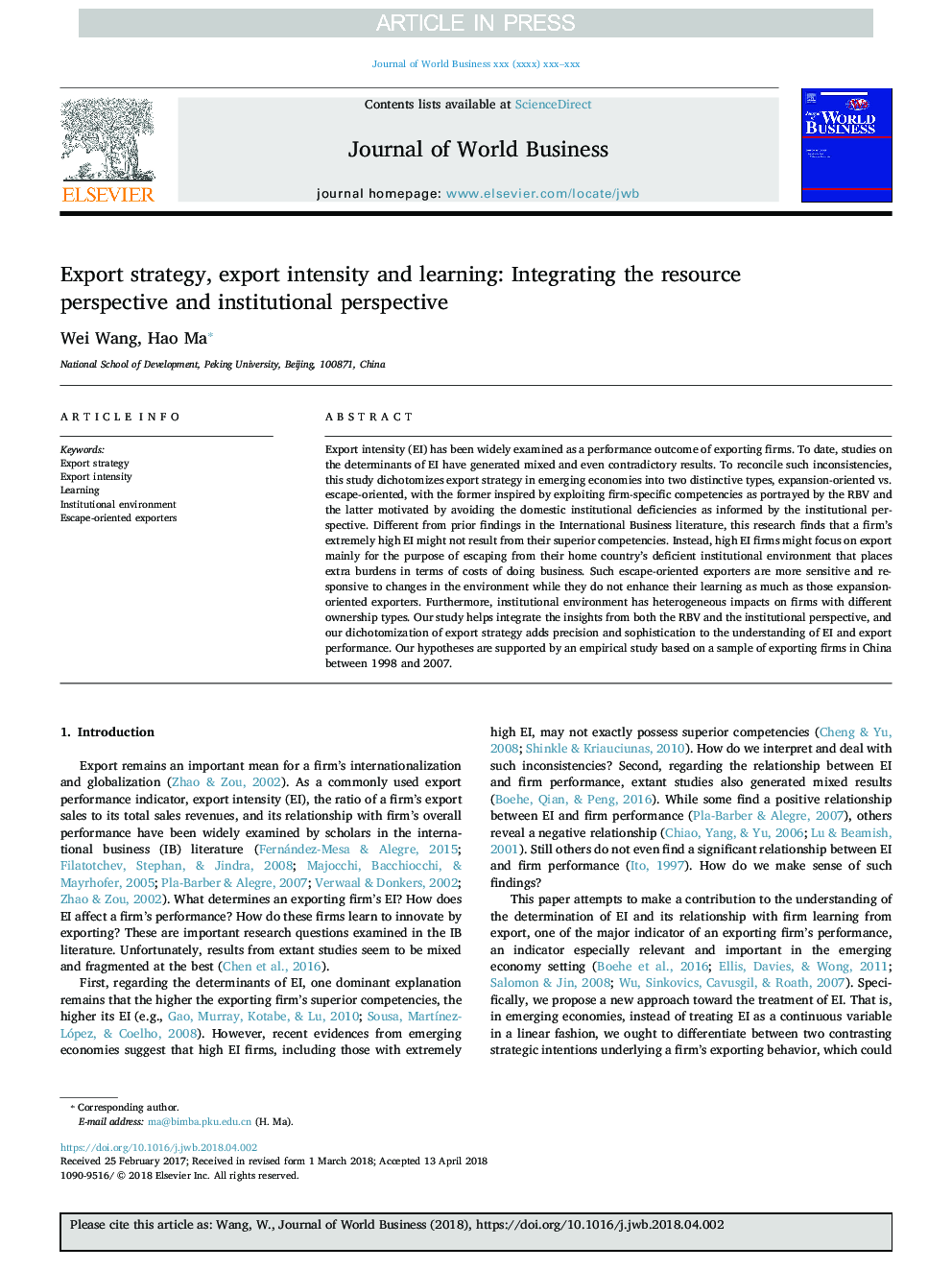| Article ID | Journal | Published Year | Pages | File Type |
|---|---|---|---|---|
| 7413260 | Journal of World Business | 2018 | 12 Pages |
Abstract
Export intensity (EI) has been widely examined as a performance outcome of exporting firms. To date, studies on the determinants of EI have generated mixed and even contradictory results. To reconcile such inconsistencies, this study dichotomizes export strategy in emerging economies into two distinctive types, expansion-oriented vs. escape-oriented, with the former inspired by exploiting firm-specific competencies as portrayed by the RBV and the latter motivated by avoiding the domestic institutional deficiencies as informed by the institutional perspective. Different from prior findings in the International Business literature, this research finds that a firm's extremely high EI might not result from their superior competencies. Instead, high EI firms might focus on export mainly for the purpose of escaping from their home country's deficient institutional environment that places extra burdens in terms of costs of doing business. Such escape-oriented exporters are more sensitive and responsive to changes in the environment while they do not enhance their learning as much as those expansion-oriented exporters. Furthermore, institutional environment has heterogeneous impacts on firms with different ownership types. Our study helps integrate the insights from both the RBV and the institutional perspective, and our dichotomization of export strategy adds precision and sophistication to the understanding of EI and export performance. Our hypotheses are supported by an empirical study based on a sample of exporting firms in China between 1998 and 2007.
Related Topics
Social Sciences and Humanities
Business, Management and Accounting
Business and International Management
Authors
Wei Wang, Hao Ma,
